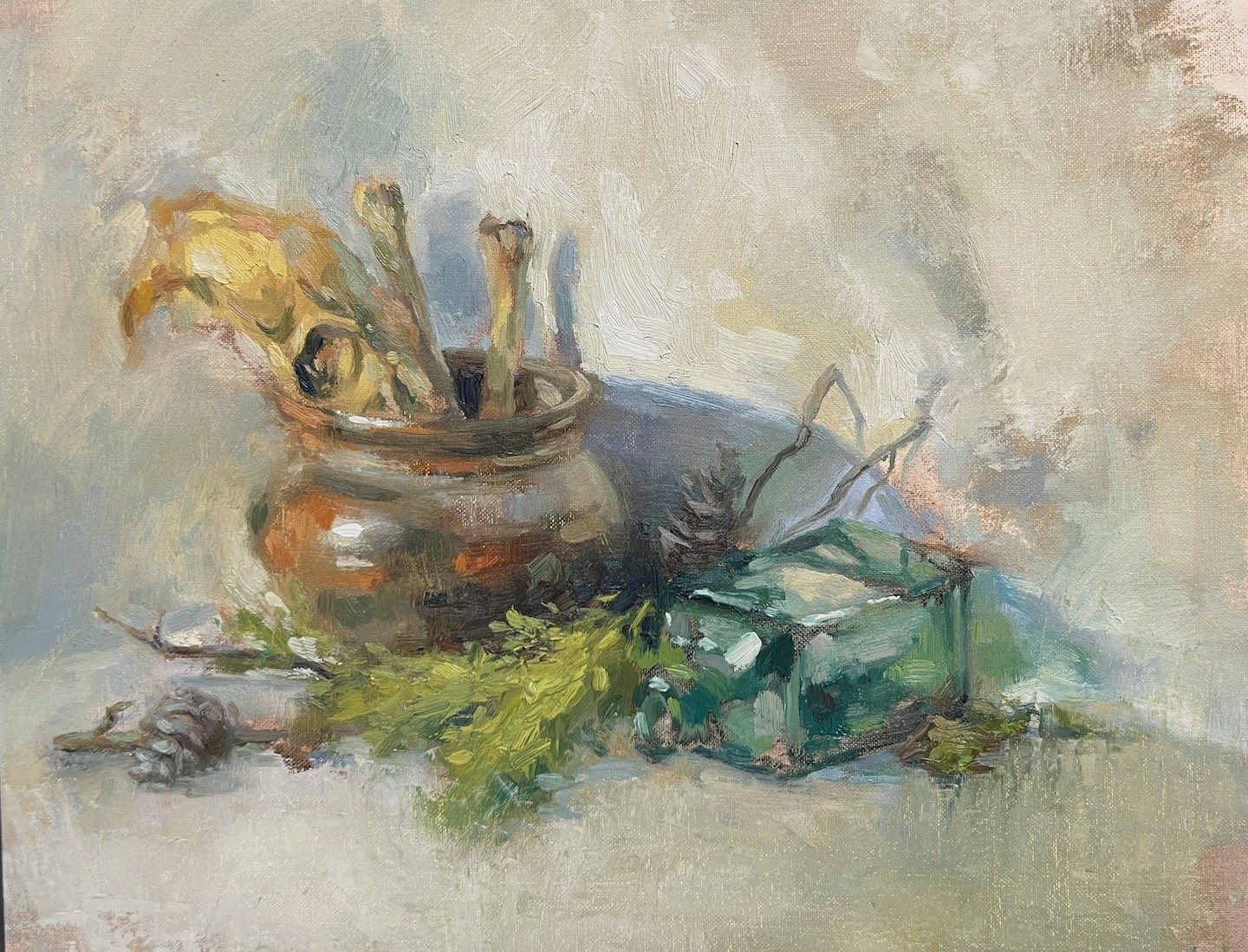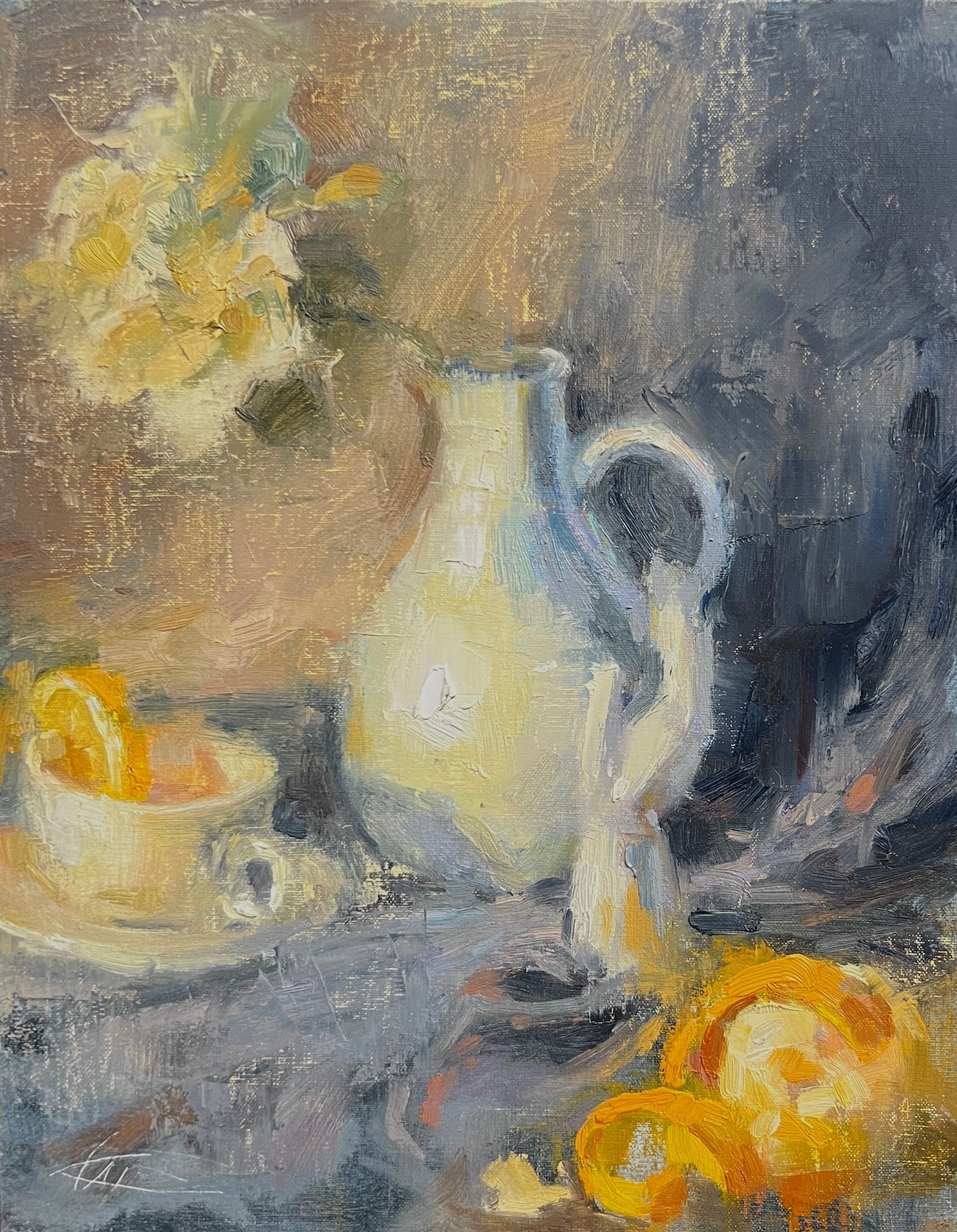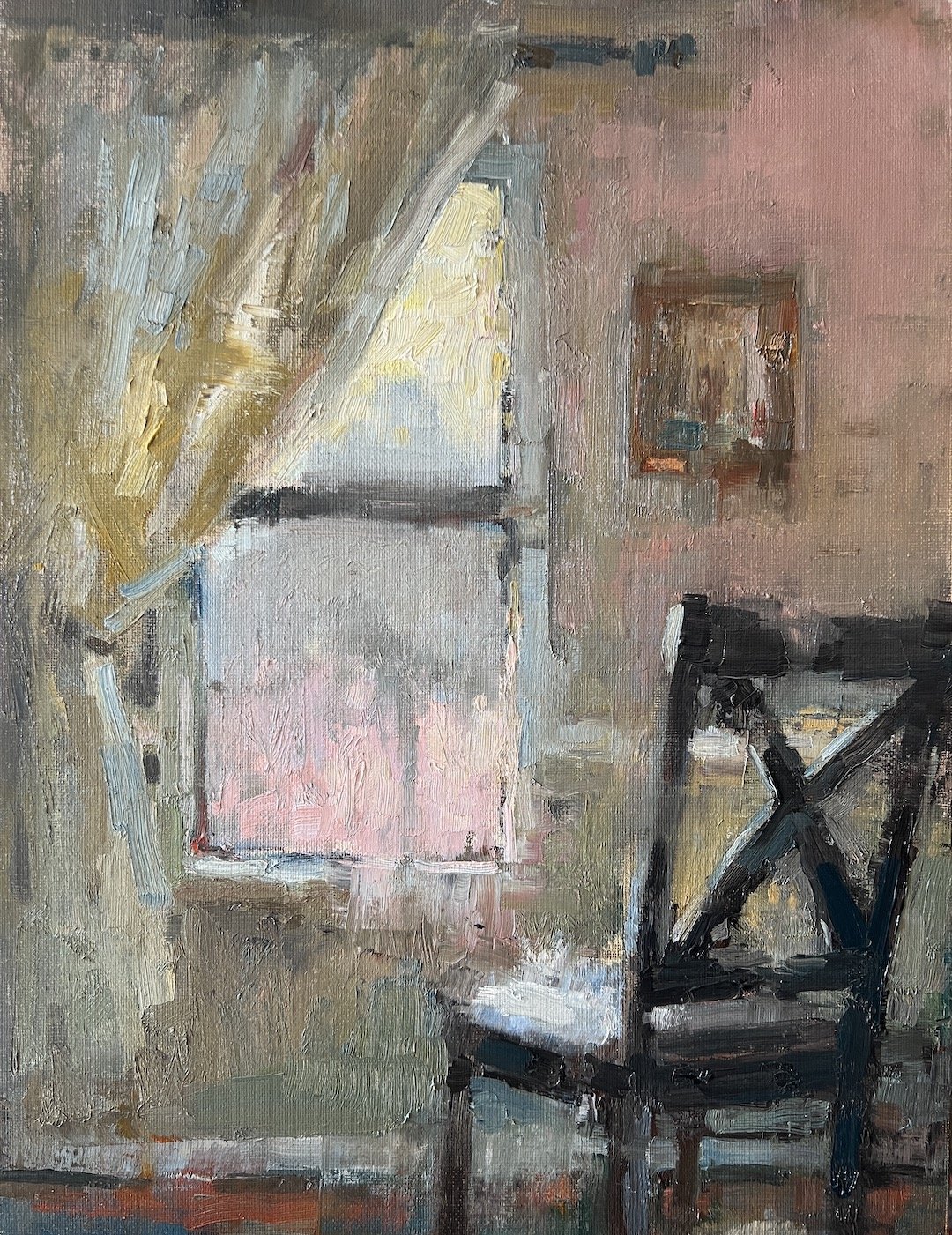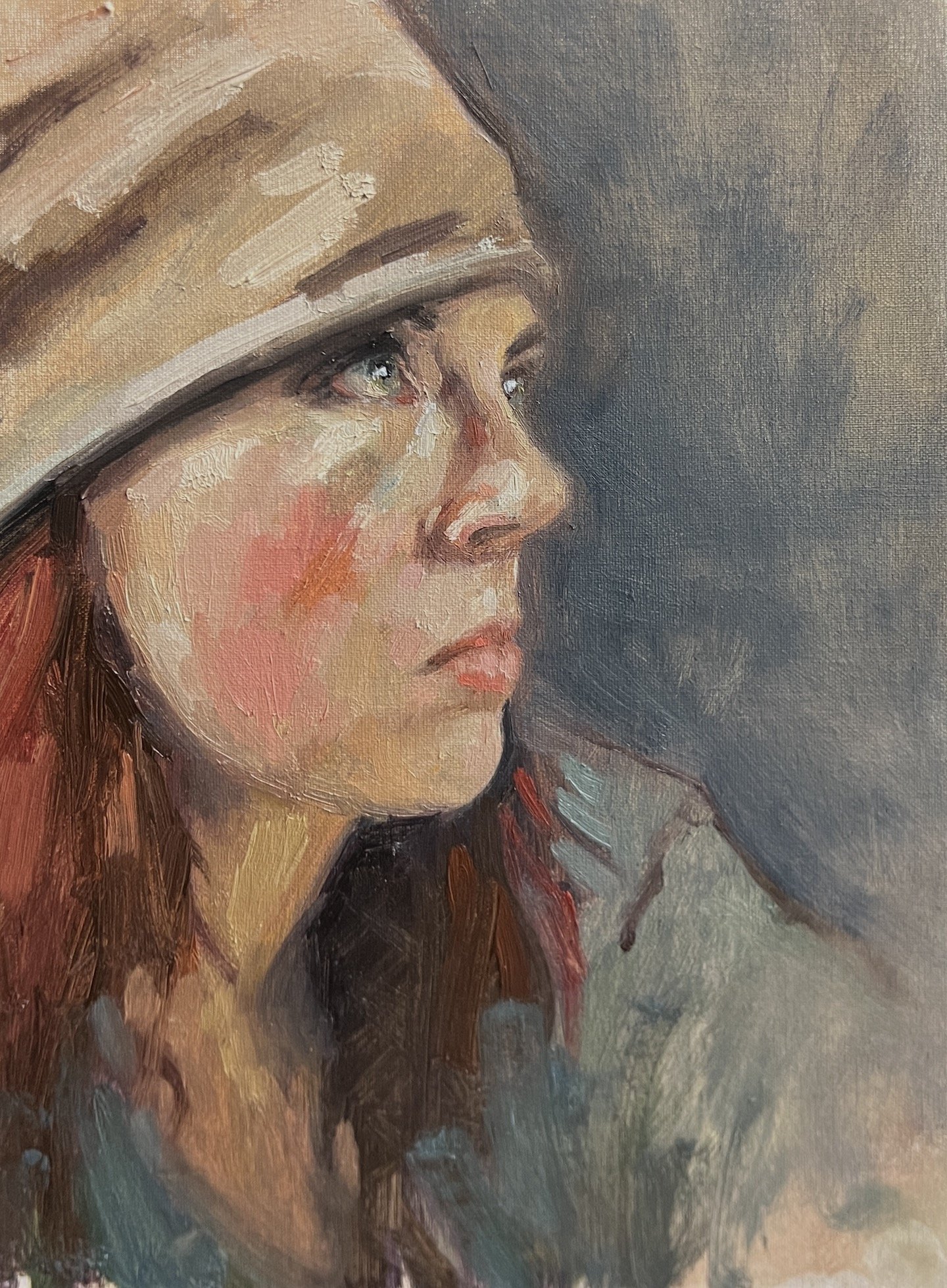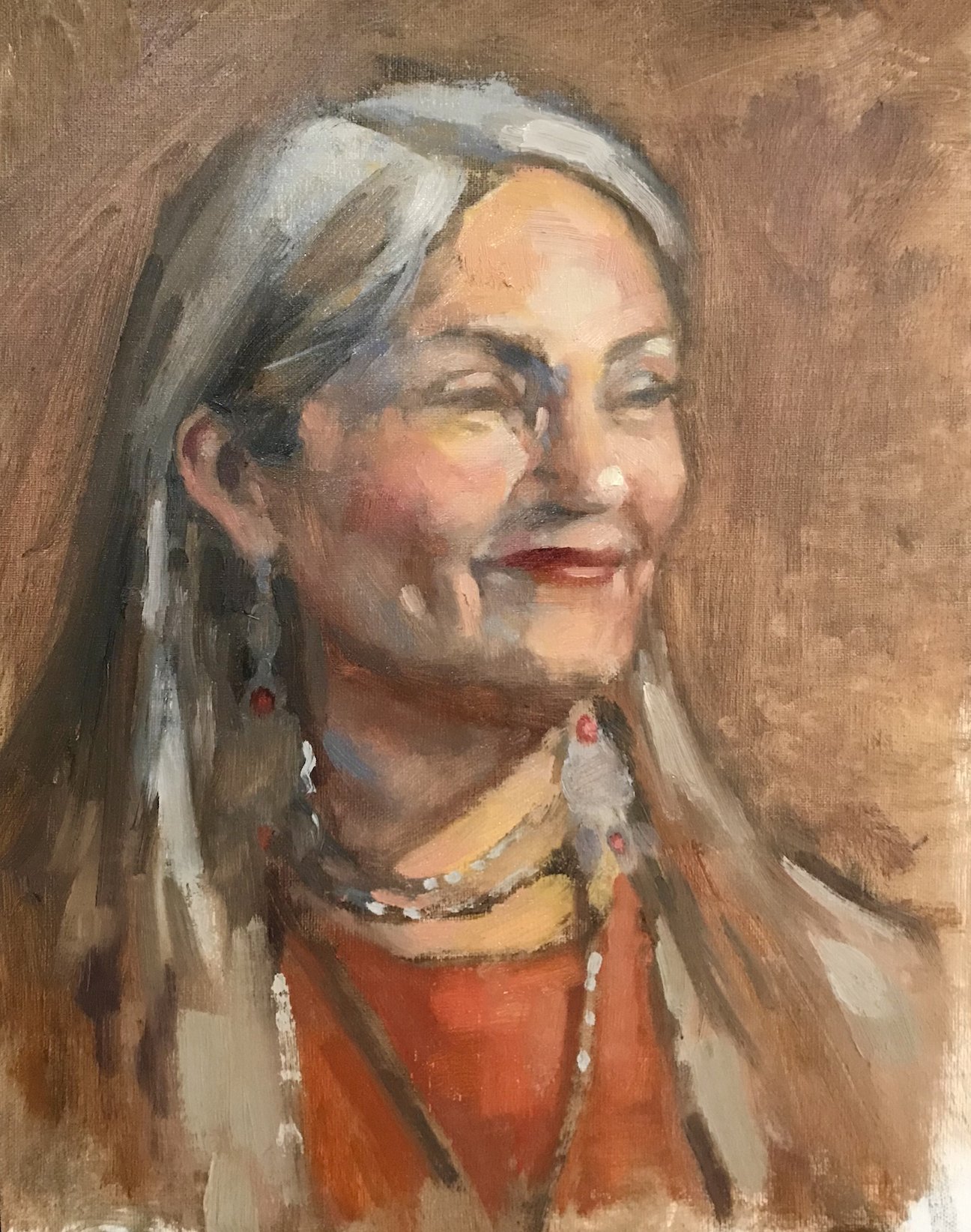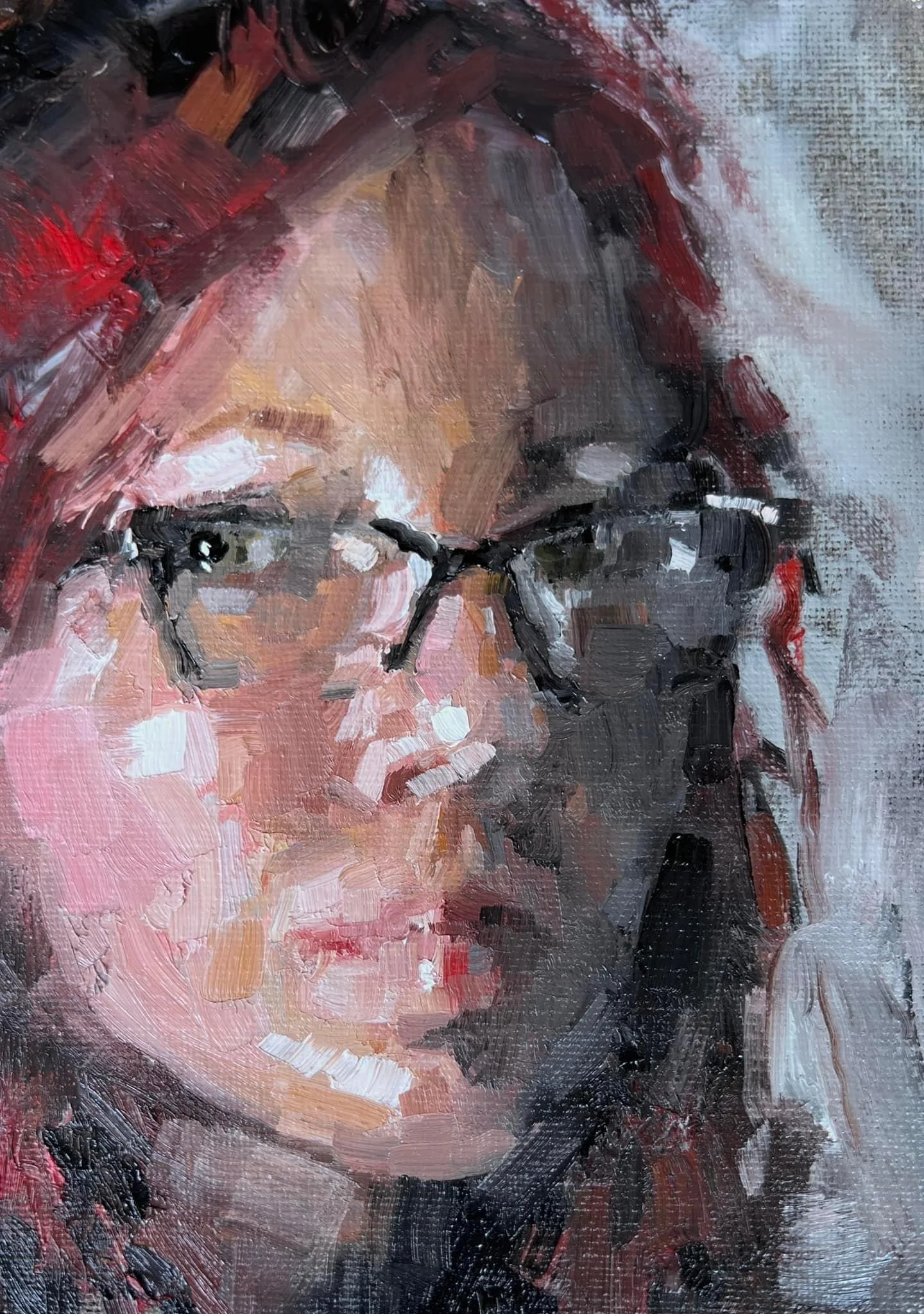Interview with artist April Burris
April Burris grew up in small town Arkansas and her rich impressionistic oil paintings depict the simpler life. Primarily a plein air painter, April enjoys the challenge of revealing the beauty of the rural landscape that is often overlooked. More of her work can be found at Cathy Kline Art Gallery in Parkville, Missouri, Art on the Square in Bentonville, Arkansas, Ellen Hobgood & Associates in Heber Springs, Arkansas, Art Group Gallery in Little Rock, Arkansas (beginning in February), and at her website aprilburris.com.

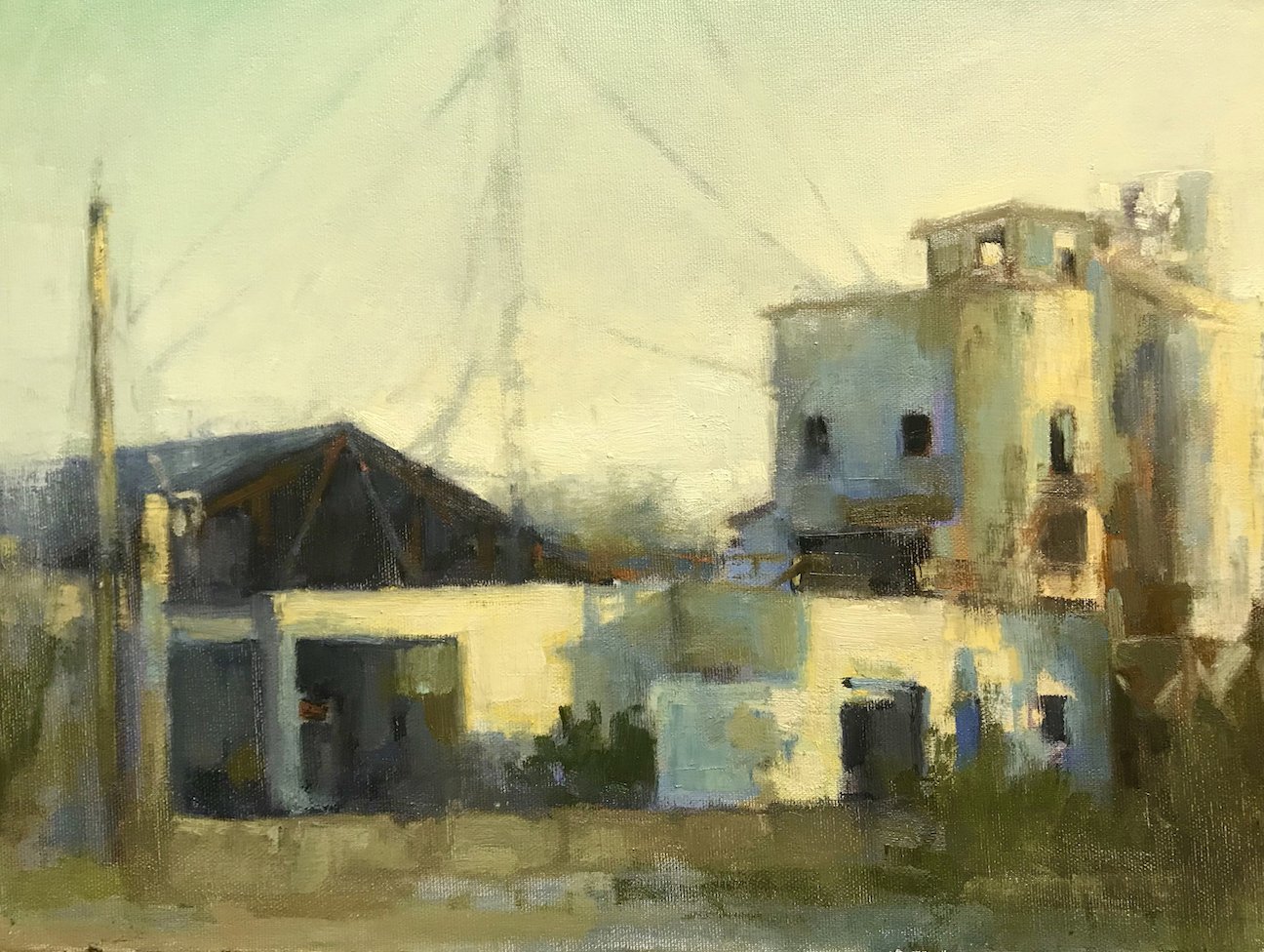
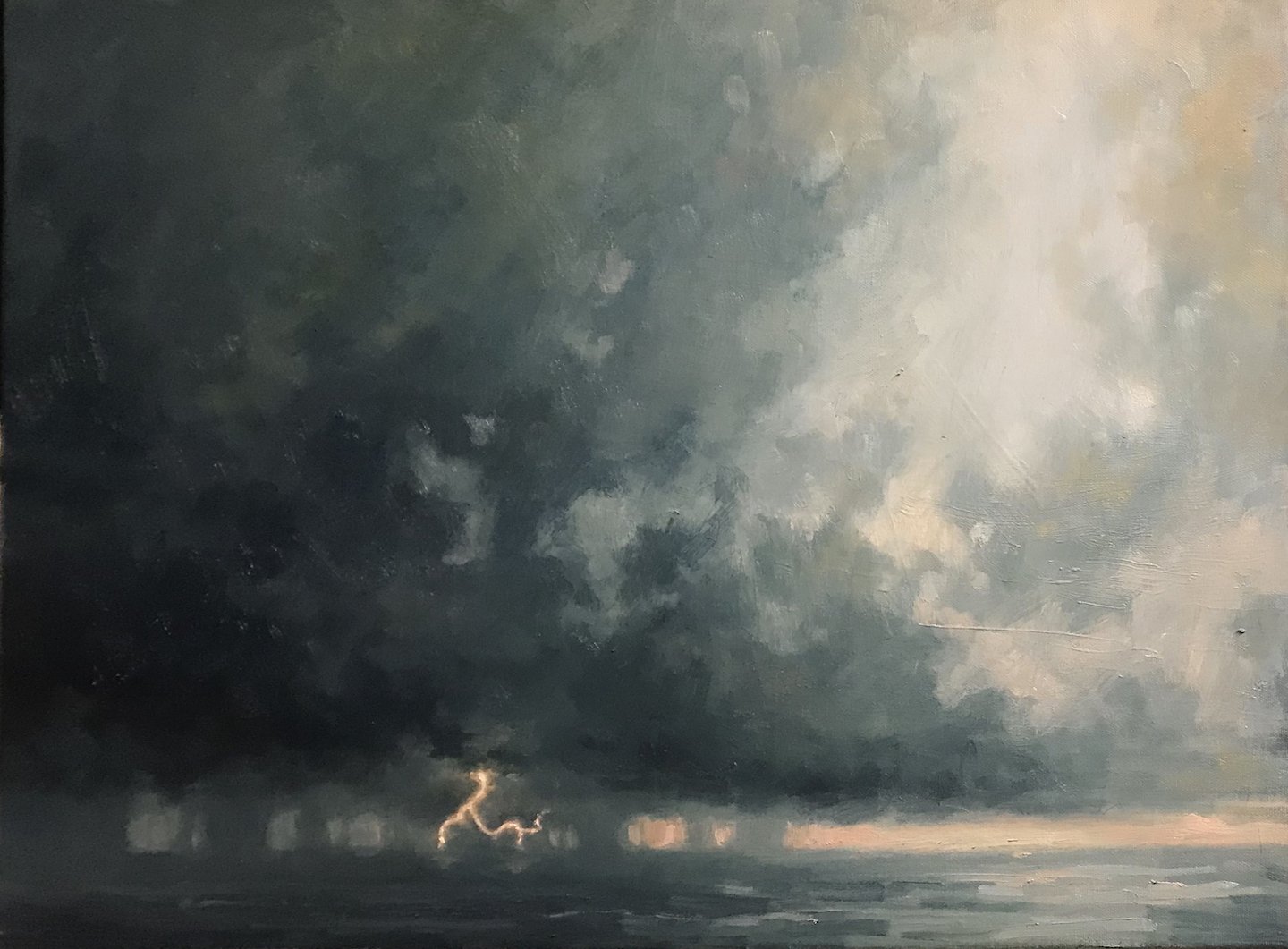
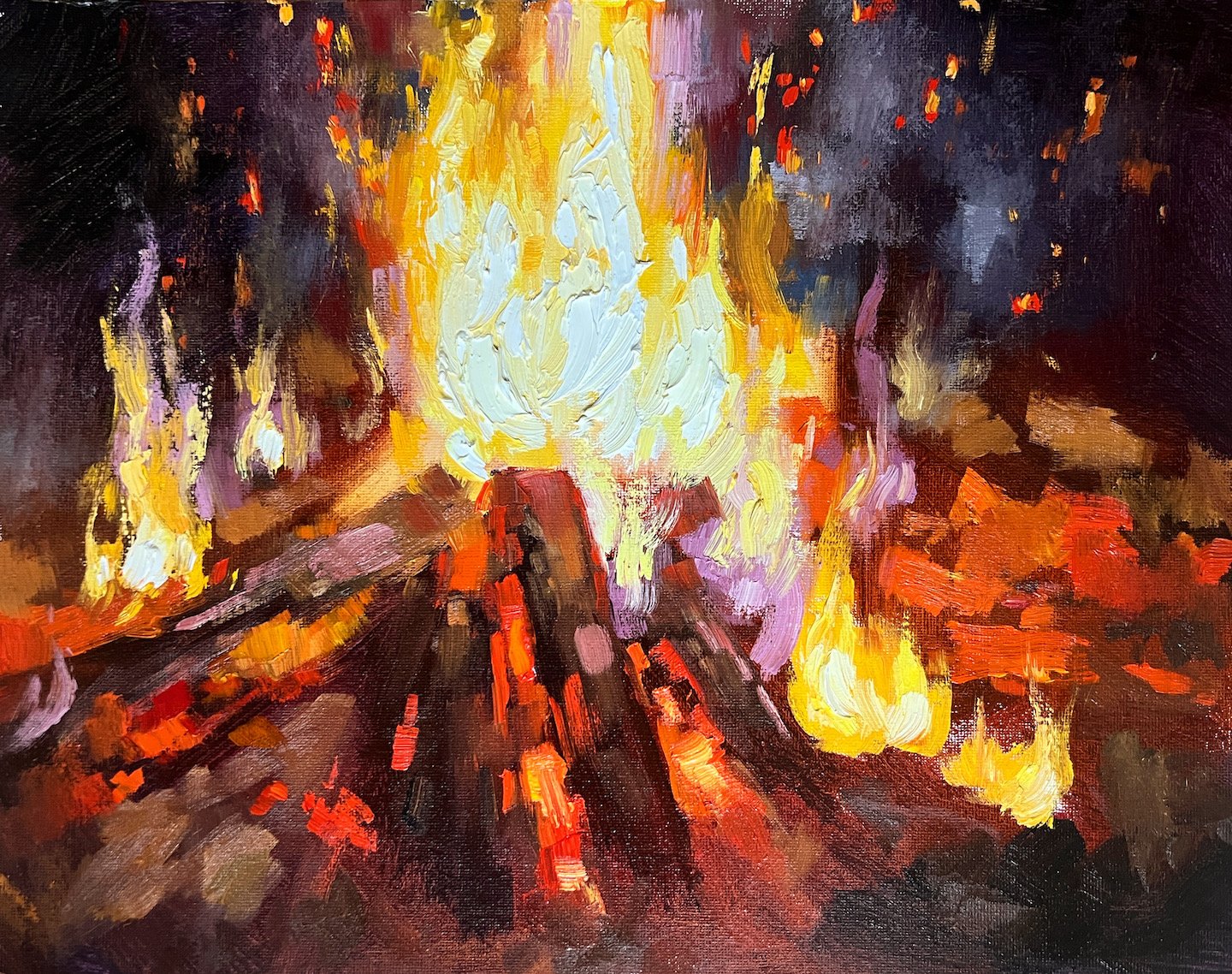
AAS: April did you grow up in Arkansas?
AB: I did. My mother is disabled and was unable to be a mom in the traditional sense, but I am very lucky to have had grandparents who were willing to step up to the plate and raise me. When I was five we moved to Clinton, which is in north central Arkansas. The vast majority of my formative memories are of the hilly terrain of small town north Arkansas. I was an only child, so I spent a lot time alone. Days were spent either drawing or outside; climbing trees, wandering through the woods, and laying in the yard watching the clouds. So much time spent outdoors made an impression on my young mind that I would only realize as an adult.
I went to nearby Conway for college and then spent the better half of my twenties in New York. I vividly remember coming back home for a visit as an adult and being overwhelmed with how incredibly beautiful this area is. It was like seeing it for the first time. How did I miss all this? Even still I had no interest in moving back, but life had its own plans. About 9 years ago, family health issues brought my husband, two kids and myself back to Clinton and we have been here since.
AAS: Was painting something you were interested in as a kid?
AB: When I was little I wanted to be a Disney Imagineer and draw cartoons. I spent hours copying cartoon characters on tv and from books. My grandfather would often submit my drawings to news station contests and there were times I would get a toy in the mail as a prize. I felt like a “real” artist. My grandmother, a true product of her time, was a huge fan of Bob Ross. What seemed like every afternoon she would sit in front of the tv, taking notes. When I would ask to paint she would try to show me the “right” way, and all I knew was I didn’t want to paint like that. Since that was how you were “supposed” to paint, I didn’t do a lot of painting.
My grandfather passed away when I was in middle school, and it felt like with him died a lot of my desire to create. In high school I pushed art to the side. I would draw privately, but the abridged version of this story is kids can be mean and art wasn’t cool. I even dropped out of art class because I “didn’t have time.” The truth is, at 16, all I wanted was to fit in and art didn’t fit the cool teenager mold.
AAS: When and how did you first become interested in plein air painting?
AB: I actually started out as an abstract painter. In college I began painting colorful abstract paintings in acrylic at home in my spare time. I experimented with varying subject matter and styles. I had no training. I had no idea what I was doing. One day, I took some of my acrylics and canvas and went outside to paint from life. I had never heard of anyone doing it, aside from the French Impressionists, but it was a nice day and why not? I loved it so much, but I had no idea that one afternoon would eventually turn into something I would build a career on. I continued with my abstract work, only occasionally painting from life through my twenties.
When I moved back to Arkansas, I realized I was no longer learning from my abstractions. I have a cousin who lived in Florida at the time named Sharon Yarbrough, and I was fascinated to learn that she and others go outside to paint as a matter of practice. Learning from nature. Grabbing the light. I had already been working in oils. My husband had thoughtfully purchased a set of oil paints for me for Christmas one year, and I realized I had been trying to make acrylics work like oil. I remembered my days sitting outside with my acrylics on the picnic table. I reached out on social media to ask about shadowing; I knew there were special easels and gear and I had no clue about any of that. Since my cousin lived a few states away, she kindly gave me the names of two Arkansas plein air painters I had never heard of: John Lasater and Jason Sacran. Serendipitously, a few months later, Jason was hosting a free demo. I drove home from that demo with a feeling that this day would be one I would remember.
“The funny thing about art is that the most mundane locations, almost without exception, create the most interesting paintings.”
AAS: I want to ask first about Overpass. It is scene we are all familiar with and mostly ignore. But you managed to show that it can be beautiful and interesting. Was that image something you thought about for a while to paint or did you just stumble upon it?
Overpass, 14” x 18”, oil on linen
AB: Overpass is a scene that is located not far from my home. It is also one of my favorite roads for walking and runs. I had been thinking about painting that location for weeks. The beautiful thing about being outdoors is that you see so many things one would normally, as you say, mostly ignore. One day over the summer I was on a quick run and as I ran under the overpass there had to have been thirty or forty barn swallows flying around everywhere. The sun was still low in the sky and there was a light reflection and shadow interplay underneath the structure. It was that moment that I knew I had to record this scene. Enough thinking of it. It was time.
The funny thing about art is that the most mundane locations, almost without exception, create the most interesting paintings. My goal with my current work is to give the viewer a sense that they are looking into a memory; a dream from which they are just waking. I think the incredible thing about simple scenes is that we all feel as though we have stood in that location. You get a sense of place and nostalgia, though you may have no idea where the physical place may be. None of my works are particularly detailed, which is intentional. I prefer to let the viewer put some of the pieces together. To linger and wonder. Overpass is no exception.
AAS: Fire in the Sky is one of my favorites of your night scenes. Tell me about that painting and what it is like painting outside, at night, in the dark.
Fire in the Sky, 12” x 12”, oil on panel
AB: The night scene, or nocturne, is quite possibly my favorite subject matter to paint. Fire in the Sky was created on a summer evening when I met my painter friend Pam Ledin in Conway to paint together. We found a spot downtown and I found myself drawn to the way the partially out Firestone neon sign caused the building, passing vehicles and even the street below, to glow with an intoxicating wash of red. I also wanted to emphasize the glow of the downtown area in the distance to really push the atmosphere of this scene. Typically, in atmospheric perspective, objects shift cooler as they recede into the distance, but here the foreground is considerably cooler due to the influence of the cool LED lights of the nearby police station. There are rules for a reason, but for every rule is a situation which successfully defies the rule. Artificial light can certainly cause this to happen as we see in this piece.
One of the things I love about the night is that it is the great simplifier. So much of what we see in the day falls into shadow. Colors cool and neutralize. Light sources, whether the sky or artificial light, or some combination of the two, completely change a scene we may pass daily. I talk a lot about the beauty of everyday life, and little expresses this sentiment better than our world at night.
Painting outdoors at night is simultaneously simpler and more difficult than painting outdoors during the day. Certainly, things change during the night. Lights turn off, vehicles move, the moon shifts position, but during the day, the light changes faster and more dramatically than during the night. You are able to more slowly execute your work. That is the singular advantage. At night, you must have both your surface and palette lit well enough to see what you’re doing. Occasionally, you can get away with a streetlight, but typically it is of utmost importance to bring lights with you to clamp to your easel.
Painting under lights at night, however, presents its own challenges. Painting the dark colors of the night under even the best lighting can be difficult to see. Lights reflect and the glare of a nocturne can be a challenge to work around. Those lights which are invaluable attract bugs. Lots of bugs. Moths, mosquitos, gnats, beetles; all have fallen prey to my painting surfaces in much greater quantities than during a daytime painting session. I often joke that bugs in the paint are nature’s provenance; a way for future historians to verify the piece was in fact painted on site. I do occasionally paint outdoors in cold weather and avoid the insect problem, to paint Christmas lights or snow at night, but the cold of a winter night standing mostly still feels ever colder without the sun’s influence.
Of course there is always the issue of safety at night in particular. Being alone in the dark can be very intimidating. I take safety precautions and always try to be aware of my surroundings and listen to my instinct. If something or someone’s presence feels off, I keep my vehicle close by and get out of there and finish up in the studio. It has happened before, but thankfully those times are few and far between. If I’m able, I love to paint nocturnes with a painting buddy, but this isn’t always possible. Painting a nocturne outdoors is a challenge, but your eyes are able to see much more than you will ever be able to glean from parts of any reference photos, and that is what keeps me hooked.
AAS: You describe yourself as an impressionist painter of atmospheric landscapes. Fire in the Sky is certainly a good example of that. Where or who do you get your inspiration from?
AB: Inspiration is such a loaded word, isn’t it? There are so many things that can provide inspiration and it can be difficult to recognize them. Inspiration for me can come from any facet of my world. The light on a friend’s temple as they tell a story. Trees peeking through the fog. The abstract shapes of visually connecting buildings in the distance. Backlit figures of children playing baseball in the evening. A sunset that stops you in your tracks. These things are all but fleeting moments in time and it is my life’s work to present them in such a way that honors their truth. The bulk of my work is a visual journal of sorts. Most things I paint are a place I’ve been, people I know, or something meaningful to my life. The very fact that we exist is worth celebration and yet, there is so much overlooked beauty in the world. Scenes we pass without a second thought each day when viewed through the lens of art can become as elevated as any of the greatest paintings of all time.
AAS: Small Town Revival is just a wonderful painting. I grew up in a small town and this painting brings back a lot of memories.
Small Town Revival, 11” x 14”, oil on panel
AB: Small Town Revival was painted at the White River Plein Air Competition in Cotter, Arkansas and it is important to me because it represents a shift in style for my work. The day I painted Small Town Revival the rain was pouring. In a competition you only have so many days to paint and I did not intend to waste time. I had driven around that morning looking for a painting location and this old water tower looking down the hill spoke to me. I found a side street for parking and was able to complete the bulk of the piece under an umbrella in the rain. The local fire department is located at the top of the hill near me, and about halfway through the painting the town’s tornado sirens went off. I packed up, pulled my car up the hill, parked, and went inside until it was all clear. I am grateful I was able to go inside and feel safe to return to my work. That’s the thing about painting outdoors. Nature is going to do what it does whether you’re outside or not. All you can do is roll with it. Truthfully, though, I have found that painting in these less than ideal conditions seems to infuse much more of that feeling of the being there into my work than a photo could.
Small Town Revival’s title is a nod to Roosevelt’s attempt to help small town America during the Great Depression and also the renewal of life rain brings. This piece received a second place award, but more important than any award is the direction that this piece shifted my work and the effect that technique change has to this day.
AAS: I have interviewed several Arkansas plein air painters. It seems to be a close knit and supportive group.
AB: I cannot say enough about the plein air community. Being an artist is a lonely pursuit. As artists we lock ourselves in studios and dive into our craft alone, working out our errors in frustrated groans and curses unheard by others. The plein air community is different. From the moment I was first introduced to other plein air artists, I knew I had found my people. The plein air community is unique in that it is built not only on the love of art, but the love of the land. Let’s face it. It takes a special breed of crazy to stand outside in all kinds of weather in the humble pursuit of authenticity. I have to say I have never been to an event or competition where I wasn’t greeted with friendly faces. Even in the spirit of competition, I leave every event with more friends than I had when I arrived.
I know you’ve interviewed a couple of plein air artists already. The art community in Arkansas is small and the plein air community smaller yet. I mentored under John Lasater for about a year, and he continues to be a tremendous teacher and friend through my art journey. He is always willing to give advice when I need it the most. The most talented artists also tend to be the most generous with their time and advice and John is hardly an exception. Oddly I met Amy Scoggins when she was organizing one of John’s workshops. She and I have become good friends and are art accountability partners so to speak. We keep each other painting when we’re in a slump. We also often travel together to paint and to attend competitions. It is invaluable to have a close friend with you when you’re in an unfamiliar place. Amy and I are actually working on a joint series of paintings for a two woman show over the next few years of paintings from our adventures.
AAS: Now, you do paint much more than just landscapes. I love how you apply your style to still lifes like in Etude des Tournesols [Study of Sunflowers]. It is just delightful.
Etude des Tournesols, 16” x 12”, oil on linen
AB: I love learning from life, and still life is no exception. Etude des Tournesols is a study of the remnants of the beautiful tall sunflowers which I love to grow in my backyard over the summer. The flowers in this piece are the last bits of the season, hastily picked before they faded completely. As a rule, my still life works tend to lean nontraditional. I have artist friends whose still life works are formal and polished, but my still life voice leans a little wild and quirky. This likely comes as no surprise to my close friends.
My goal with Etude des Tournesols was to emphasize the beauty of imperfection by merging these clusters of flowers into big abstract shapes and break them strategically apart with gestural brushstrokes. The mason jar is vintage and imperfect, the flowers the smallest on the plant, wilting at the end of the season, and yet their dance in the light is worthy of study. I was very honored that Etude des Tournesols was given an honorable mention by Dan Beck at the American Impressionist Society’s Online All Member Exhibition in 2021. You can see some of the process of this painting on my Instagram @aburrisart.
AAS: You also paint some wonderful portraits. My favorite is Joe with Monocle. It is a terrific painting on many levels. Tell me about it.
Joe with Monocle, 20” x 16”, oil on canvas
AB: Thank you. I love painting people and I’m certain figures and portraits will continue to amaze and confound me through my career. Joe with Monocle began as a self-imposed challenge during 2020. My kids were home doing school virtually and I was doing a lot of still life, as one could imagine. I wanted to do something different. I posted a request on social media for a photo friends would like to see painted. The response was huge. I decided that I would let my kids choose a number and the photo it landed on I would find a way to paint. I knew I would likely be doing a dog portrait, but that was the point – to be creative. This is the result of that painting challenge. The photo was a bathroom mirror selfie with Joe making a face. His facial expression reminded me so much of some combination of a crazy professor and Giorgio Tsoukalos from Ancient Aliens. I ran with it. I modified his expression slightly to add the monocle and went crazy with his hair. In hindsight, the direction this piece took is truly of reflection of my state of mind during 2020 – all of our lives tossed upside down, going a bit crazy. Doing this piece helped me give myself permission to experiment and just paint what I feel. A permission I have never revoked.
AAS: April, do you see your art practice changing any in the next few years?
AB: Absolutely. I feel that if my art practice does not grow and change over time, I will have failed as an artist. I often say if I have one goal in my artistic growth, it is to be mildly disappointed in the last year’s body of work year after year. I hope to continue to learn, change and evolve over time. I am so fortunate to have so many amazing supportive family members, friends and artists who continue to show me their love and support every day of my life. There are too many to mention, in fact, and I am so grateful for each one.
As for the near future, I plan to study as much of greats as possible, and I'm certain that study will continue to change my practice. This year I will be studying under Ben Valentine, and I am excited to add more tools to my art toolbox, so to speak. I have also been going bigger in the studio, reserving my smaller pieces for painting on location. As for my field practice, I anticipate more travel and a bit of workshop instruction. In the spring of this year, I’m heading to France with Holly Tilley, who you have interviewed, as co-instructor for a plein air painting excursion to the Loire Valley. Back home in Arkansas, I’m currently showing my work at Art on the Square in downtown Bentonville, where a pop-up solo show will take place during the year as well. As of February 6th, I’ll be joining Art Group Gallery in Little Rock.
